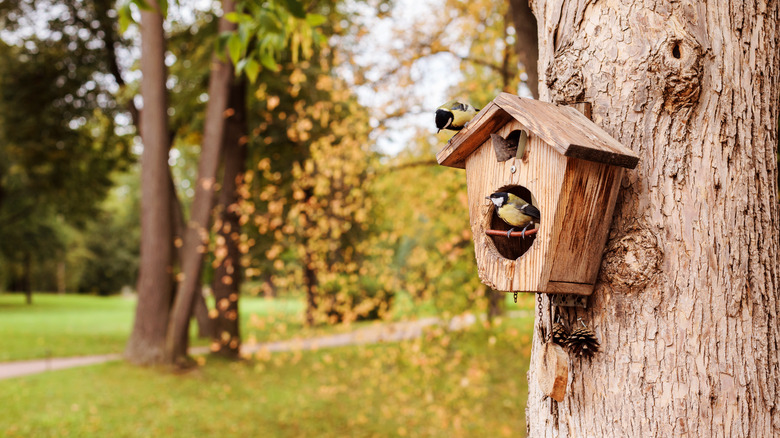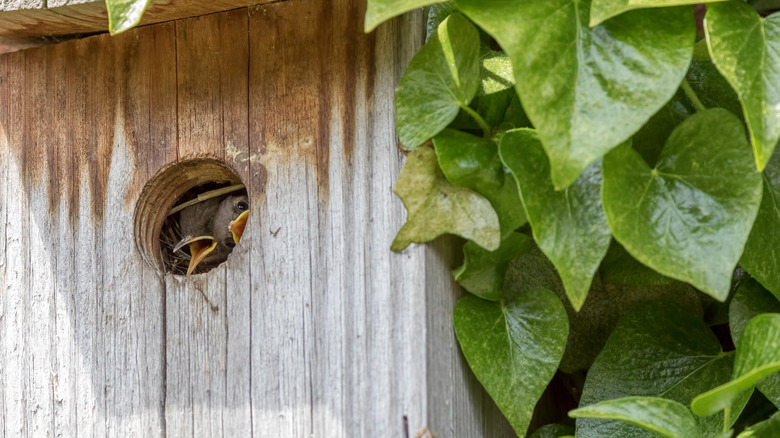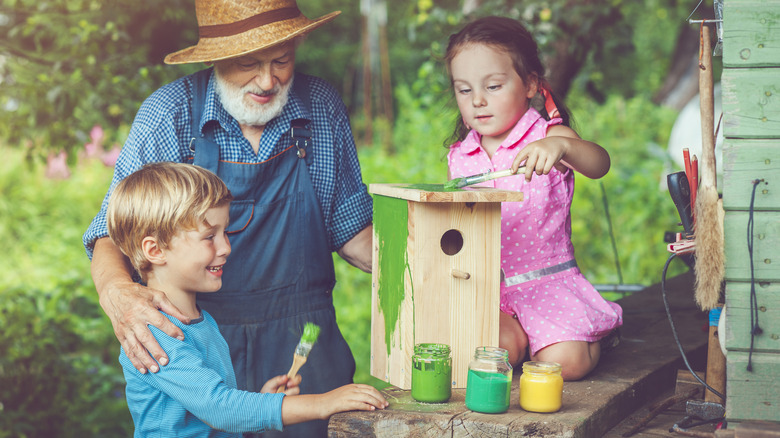The Best Time Of Year To Put Out Your Birdhouse May Surprise You
A well-designed birdhouse is far more than just a quaint garden ornament. Any birder worth their birdseed knows cavity-nesting birds, which are birds nesting in tree, riverbank, or cliff face holes, will reside in one. They're particularly useful if you want to prevent birds from nesting in the rafters of your home. The key to achieving high occupancy rates is knowing when in the year to affix the birdhouse to that backyard tree or patio roof pillar. You might think the best time is spring, when birds start nesting, right? Well, contrary to what you might assume, the best time of year is late winter since some birds start scouting for a suitable and safe den even before the weather begins to warm.
Hunting for that perfect hideaway is part of their mating rituals. After all, having the right nesting spot is attractive to potential mates. On the flip side, investigating potential nest sites is also one of the first things some newly coupled pairs do together. Birds in your area might also use the nests for things other than bringing up babies, like sheltering from adverse weather conditions or hiding from predators.
Attracting cavity-nesting birds, in general
As mentioned above, if you want to attract any and all local cavity-nesting birds to your yard, get your birdhouses ready for visitors by late winter. This catches the early nesters and allows time for late nesters to claim their territory. There's an exception to this rule: Sometimes, nests get destroyed or abandoned. This can happen because of predation (leaving birds feeling unsafe in their chosen nesting location), illness (like a parasite infestation), or perceived harassment. Putting up a few new birdhouses late in the season — say, late spring or even early summer — can also help bird couples looking for a new site.
Birdhouses can also double as a shelter for non-migratory birds during the brutal winter months. They use them as shelter from low temperatures, predators, and storms. They also use them as roost sites at the end of the breeding cycle. If you want to help out birds during this chilly season, mount your birdhouse in late summer. This gives birds time to locate their chosen shelter as the seasons shift through fall and into winter.
Catering to specific bird species
Timing also matters when considering the types of birds you will want in your yard. Though most species of birds mate and nest in the spring, exactly when that happens during that season depends on the species. For example, some homeowners spot swallow and bluebird pairs as early as a month before the vernal equinox. Other cavity nesters, like house wrens, procreate multiple times annually. Occasionally, woodpeckers and some other species will seek out a new nest site later because their first nests were destroyed or their chicks killed. Contact your local bird association to ask about the habits of local bird species. An excellent place to start is the list of birding clubs and organizations on the American Birding Association website.
Before you mount your birdhouses, spend a little time optimizing them. Decorate your birdhouses by painting them on the outside only. Ensure the entrance holes are no bigger than 1 ⅜" in diameter. This reduces the chance of predatory starlings getting in. Ensure the roof is sloped and one side is hinged to encourage drainage and make the birdhouse easy to clean. You might need to consider quirks if you're catering to a specific bird species. For example, some birds, like purple martins, are highly social and prefer colony-style birdhouses.


